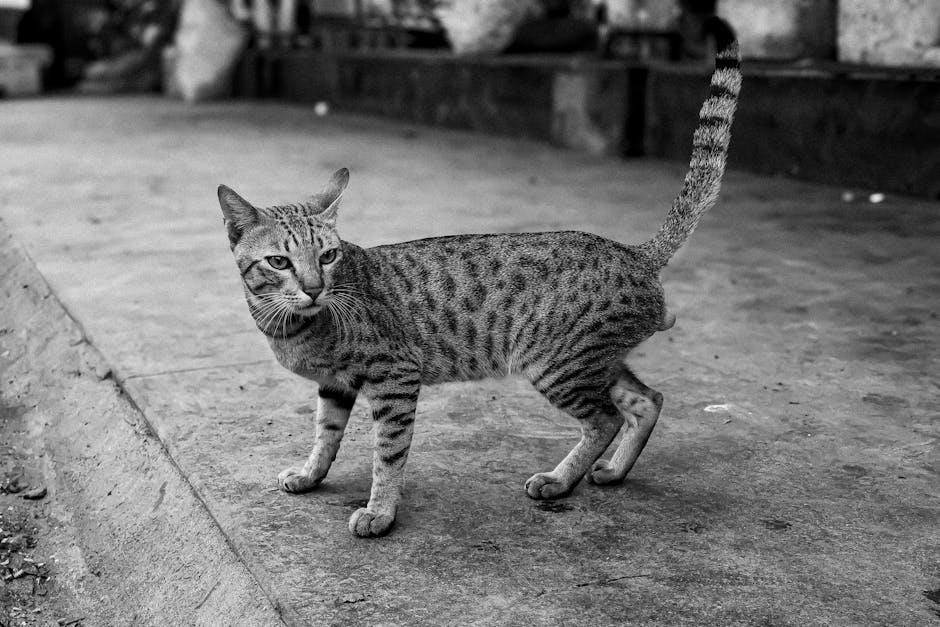Whetstone grit refers to the size of abrasive particles on a sharpening stone, determining its coarseness or fineness. Lower grits are used for repairing chips, while higher grits polish edges. Understanding grit is essential for effective sharpening, ensuring optimal results for various knives and tools.

What is Whetstone Grit?
Whetstone grit refers to the size of the abrasive particles on a sharpening stone, which determines its coarseness or fineness. These particles are responsible for removing metal from a blade during the sharpening process. A lower grit stone has larger particles, making it more aggressive and suitable for repairing damaged edges or removing metal quickly. In contrast, a higher grit stone has smaller particles, producing a finer edge and a polished finish.
The grit size is akin to the grade of sandpaper, with the particles’ size and spacing playing a crucial role in determining the stone’s effectiveness. Understanding whetstone grit is fundamental for achieving the desired sharpness and edge quality. It allows users to tailor their sharpening process to the specific needs of their knives or tools, ensuring optimal results.
The progression of grit sizes, from coarse to fine, is essential for sharpening, as each stage builds on the previous one to refine the edge. This concept is central to mastering the art of sharpening and maintaining sharp blades for various applications.

How Grit Affects Sharpening
Whetstone grit significantly impacts sharpening efficiency. Coarser grits rapidly remove metal, ideal for repairing damaged edges, while finer grits polish and refine the blade. Proper grit progression ensures a sharp, precise edge, essential for optimal performance in various cutting tasks.
3.1 Coarse Grit
Coarse grit whetstones are essential for heavy-duty sharpening tasks. Typically ranging from 100 to 400 grit, these stones quickly remove metal, making them ideal for repairing damaged or dull blades. They are perfect for restoring tools with significant edge wear or chips. Coarse grit stones are also useful for shaping or reprofiling blades, allowing for substantial metal removal with each stroke. However, they leave scratches on the blade, requiring finer grits for polishing. For beginners, coarse grit stones are a great starting point as they rapidly restore a functional edge. Proper use of coarse grit ensures a solid foundation for further sharpening with medium and fine grit stones, ultimately leading to a razor-sharp edge. Regular maintenance and correct technique are crucial to maximize the effectiveness of coarse grit stones in any sharpening process.
3.2 Medium Grit
Medium grit whetstones, typically ranging from 1000 to 1500 grit, serve as a transitional phase in the sharpening process. They bridge the gap between coarse and fine grits, smoothing out the rough edges created by coarser stones. This grit range is ideal for refining the blade’s edge, removing minor scratches, and preparing it for final polishing. Medium grit stones are versatile and often used for maintaining and sharpening knives that are already in decent condition. They strike a balance between cutting power and edge refinement, making them a popular choice for everyday sharpening tasks. For chefs, hunters, and outdoor enthusiasts, medium grit stones are essential for keeping knives sharp and functional. Regular use of medium grit ensures a consistent edge that is both durable and sharp. By incorporating medium grit into your sharpening routine, you can achieve a polished yet practical edge that meets the demands of various cutting tasks.
3.3 Fine Grit
Fine grit whetstones, typically ranging from 3000 to 8000 grit, are designed for polishing and refining the edge of a blade. These stones are used after medium grit to create a razor-sharp, highly polished finish. Fine grit stones are ideal for final sharpening, as they remove microscopic scratches and leave the edge smooth and precise. They are particularly useful for high-carbon steel knives, chef knives, and precision tools where a mirror-like finish is desired. Fine grit stones require light pressure and careful technique to avoid over-polishing, which can dull the edge. Regular use of fine grit ensures a blade stays sharp and maintains its cutting performance. For chefs, hunters, and collectors, fine grit stones are indispensable for achieving and maintaining a professional-grade edge. By incorporating fine grit into your sharpening routine, you can elevate your knife’s performance and ensure it remains in pristine condition. Fine grit is the final step in creating a truly exceptional edge, making it a crucial part of any sharpening process.

Choosing the Right Grit
Choosing the right grit depends on the knife’s condition and sharpening goals. Coarse grits repair damage, medium grits sharpen, and fine grits polish. Consider the knife’s initial dullness, desired sharpness, and edge refinement when selecting the appropriate grit for your needs.
4.1 Determining the Right Grit
Determining the right grit involves assessing the knife’s condition and sharpening objective. Start by identifying if the blade is severely dulled or only needs minor touch-ups. Coarse grits (600-1000) are ideal for repairing chipped or extremely dull edges, as they remove metal quickly. For maintaining or sharpening a slightly dull knife, medium grits (1000-4000) are more appropriate, as they refine the edge without excessive metal removal. Fine grits (6000-8000) are reserved for polishing and achieving a razor-sharp finish. Additionally, consider the type of knife and its intended use, as different knives may require specific grit progressions. For instance, a chef knife might benefit from a medium to fine grit sequence, while a hunting knife might require a coarse to medium approach. By aligning the grit selection with the knife’s needs, you ensure an efficient and effective sharpening process.
4.2 Grit Progression
Grit progression is a critical aspect of sharpening, involving the sequential use of stones with increasing fineness. This method ensures a smooth transition from coarse to fine sharpening, preventing unnecessary wear on the blade. Begin with a coarse grit (600-1000) to remove metal and correct major imperfections. Next, transition to a medium grit (1000-4000) to refine the edge and remove scratches from the coarser stone. Finally, finish with a fine grit (6000-8000) to polish the blade, achieving a razor-sharp edge. Skipping stages or using too fine a grit prematurely can lead to inefficient sharpening. Consistency in grit progression ensures even wear and a superior finish. By following this structured approach, you can maximize the effectiveness of your sharpening process and maintain your tools in optimal condition.
4.3 Factors Influencing Grit Choice
Several factors influence the choice of whetstone grit, including the type of knife, its initial condition, and the desired sharpness. For instance, a dull or damaged blade may require a coarse grit to repair, while a well-maintained edge might only need a fine grit for polishing. The knife’s intended use also plays a role; chef knives benefit from high sharpness, while hunting knives may prioritize durability. Additionally, the sharpening skill level of the user is a key consideration. Beginners may find medium grits more forgiving, while experienced sharpeners can work effectively with both coarse and fine grits. The hardness of the steel is another factor, as harder steels may require finer grits to avoid excessive wear. Lastly, personal preference and the tools available can influence grit selection. By considering these factors, one can choose the most appropriate grit for their specific sharpening needs, ensuring efficient and effective results. Balancing these elements ensures optimal edge quality and tool longevity.

Types of Whetstones by Grit
Whetstones are categorized by their grit, which determines their abrasive particle size and sharpening effectiveness. Coarse grit whetstones (100-300) are designed for heavy-duty sharpening, removing significant metal, and repairing damaged edges. They are ideal for restoring dull or chipped blades. Medium grit whetstones (1000-1500) offer a balance between sharpening power and edge refinement, making them suitable for general-purpose sharpening and maintaining a sharp edge. Fine grit whetstones (4000-8000) are used for polishing and honing, creating a razor-sharp, smooth finish. Some whetstones also feature dual grits, combining coarse and fine sides in one stone for versatility. The choice of grit type depends on the knife’s condition, the desired sharpness, and the user’s skill level. Coarse grits are best for initial sharpening, while fine grits are for final touches. Dual grit stones offer convenience for those who need both heavy sharpening and precision polishing. Understanding the types of whetstones by grit helps in selecting the right tool for specific sharpening tasks, ensuring efficient and effective results.

Best Whetstone Grit for Different Knives
Choosing the right whetstone grit depends on the knife’s purpose. Chef knives benefit from medium to fine grits for precision, while hunting knives often use coarse to medium grits for durability. Pocket knives may require finer grits for a polished edge. Matching grit to the knife’s intended use ensures optimal sharpness and longevity.
6.1 Chef Knives
Chef knives require a sharp, precise edge to handle delicate and precise cutting tasks in the kitchen. For these knives, a medium to fine grit whetstone is typically recommended. A medium grit, such as 1000-1500, is ideal for sharpening and smoothing out the edge, removing minor imperfections while maintaining durability. Fine grits, like 6000-8000, are then used to polish the blade, achieving a razor-sharp finish that glides effortlessly through ingredients.
Regular sharpening with the right grit ensures the knife retains its edge longer, reducing the need for frequent sharpening; For professional chefs and home cooks alike, pairing a medium grit for sharpening with a fine grit for honing is the perfect combination to maintain a chef knife’s performance and extend its lifespan. By understanding and selecting the appropriate grit for chef knives, one can elevate their culinary experience with precision and ease.
6.2 Hunting Knives
Hunting knives are designed for rugged, heavy-duty tasks such as field dressing and skinning, requiring a strong, durable edge. For these knives, a coarser grit whetstone is often recommended to establish a robust edge. A grit range of 600-800 is ideal for sharpening hunting knives, as it effectively removes metal and creates a sharp, versatile edge capable of withstanding tough conditions.
However, for finer touches, a medium grit (1000-1500) can be used to refine the edge, ensuring it remains sharp and resistant to dulling. Fine grits (6000-8000) are less commonly used for hunting knives, as they prioritize sharpness over durability, which may not be as critical in field situations. The key is to maintain a balance between sharpness and edge retention, ensuring the knife performs reliably in demanding environments. By selecting the right grit for hunting knives, outdoorsmen can trust their tools to deliver consistent performance when it matters most;
Ultimately, the grit choice for hunting knives should align with their intended use, prioritizing durability and versatility over ultra-fine sharpening. This approach ensures the knife remains a dependable companion in the field.
6.3 Pocket Knives
Pocket knives, designed for everyday carry and utility, require a sharp yet durable edge to handle tasks like cutting ropes, opening packages, and general use. For these knives, a medium to fine grit whetstone is typically recommended. Starting with a medium grit (1000-1500) is ideal for sharpening and maintaining the edge, while a fine grit (3000-6000) can be used to polish and refine it for precise cuts.
However, overly fine grits may not be necessary for pocket knives, as they prioritize convenience and versatility over extreme sharpness. A balanced approach ensures the knife remains functional without becoming overly delicate. Regular sharpening with the right grit helps maintain the edge, preventing it from becoming dull during frequent use. Additionally, proper care, such as cleaning and storing the knife, is essential to preserve its sharpness and longevity.

Maintaining Your Whetstone
Maintaining your whetstone is crucial to ensure its effectiveness and longevity. A well-maintained stone performs better, sharpening knives more efficiently and extending its lifespan. Regular cleaning is essential to remove metal particles and debris that can clog the stone’s surface. For water stones, simply rinse under running water or soak briefly before use. Oil stones require wiping clean with a rag and petroleum-based oil to prevent contamination.
Flattening the stone is another key maintenance step. Over time, the surface may become uneven, reducing its sharpening performance. Use a flattening stone or sandpaper to even out the surface, ensuring it remains level and effective. Proper drying is also important, as moisture can cause water stones to crack or develop mold. Always store the stone in a dry place or wrap it in a damp cloth to maintain its integrity.
By following these simple maintenance steps, you can keep your whetstone in prime condition, ensuring consistent sharpening results. Regular care not only preserves the stone but also enhances its performance, making it a reliable tool for sharpening knives and other blades. Proper maintenance is an investment in the longevity and effectiveness of your whetstone.

Common Mistakes to Avoid
Avoid using the wrong grit for the task, as it can damage the knife or stone. Insufficient maintenance, like not cleaning the stone, reduces effectiveness. Overlooking grit progression can lead to poor sharpening results. Proper technique and consistency are key to avoiding these pitfalls.
8.1 Incorrect Grit Selection
Incorrect grit selection is a common mistake that can hinder the sharpening process. Using a grit that is too coarse for a finely polished edge can scratch or damage the blade, while a grit that is too fine may fail to remove metal efficiently during initial sharpening. Many sharpening enthusiasts overlook the importance of matching the grit to the task at hand, leading to suboptimal results. For example, starting with a fine grit stone on a dull knife will not effectively remove metal and may prolong the sharpening process unnecessarily.
To avoid this, it’s essential to understand the role of each grit level. Coarse grits (e.g., 100-400) are designed for heavy metal removal and repairing damaged edges, while medium grits (1000-1500) refine the edge, and fine grits (6000-8000) polish it. Using the wrong sequence or skipping grits can result in a poorly sharpened knife. Always assess the knife’s condition and choose the appropriate grit to achieve the desired outcome. Proper grit selection ensures efficiency, prevents damage, and delivers a razor-sharp edge.
8.2 Insufficient Maintenance
Insufficient maintenance of a whetstone is another common mistake that can significantly impact sharpening effectiveness. Over time, whetstones can become clogged with metal particles and debris, reducing their abrasive efficiency. Failing to clean or flatten the stone regularly leads to uneven sharpening and poor edge quality. A warped or uneven stone can also cause the knife to sharpen inconsistently, resulting in a blade that is not truly sharp.
Neglecting maintenance can also shorten the lifespan of the whetstone. For instance, water stones require drying after use to prevent cracking, while oil stones need proper storage to avoid contamination. Ignoring these care steps can render the stone unusable over time. Additionally, insufficient maintenance often leads to frustration, as users may attribute poor sharpening results to the stone’s quality rather than their own oversight.
Regular cleaning, flattening, and proper storage are essential to maintain the stone’s performance. A well-maintained whetstone ensures consistent results and extends its useful life, making it a worthwhile investment for any sharpener. Neglecting these steps can lead to subpar sharpening outcomes and unnecessary replacement costs. Consistent care is key to maximizing the effectiveness of your whetstone.
8;4 Overlooking Grit Progression
Overlooking grit progression is a common mistake that can hinder the sharpening process. Grit progression refers to the sequential use of whetstones with increasing fineness to achieve a sharp, polished edge. Skipping stages or using the wrong sequence can result in a dull or uneven blade. Coarse grits are essential for repairing damaged edges, while finer grits refine and polish the edge. Neglecting this progression often leads to suboptimal results, as the blade may not reach its full sharpness potential.
Moreover, improper grit progression can cause unnecessary wear on both the knife and the whetstone. For instance, using a fine grit stone too early can fail to address deeper imperfections, leaving the edge rough and unrefined. Similarly, relying solely on coarse grits without progressing to finer ones can result in a blade that is sharp but lacks precision and polish.
Always start with the coarsest grit necessary for the knife’s condition and gradually move to finer grits. This ensures a smooth transition and optimal sharpening outcomes. Overlooking grit progression not only wastes time but also diminishes the effectiveness of the sharpening process. Consistent attention to grit sequence is crucial for achieving professional-level results.

Advanced Sharpening Techniques

Advanced sharpening techniques elevate your skills beyond basic sharpening, focusing on precision and edge refinement. One key method is maintaining consistent angle control throughout the sharpening process. This ensures even wear on the blade and a sharper edge. Another technique involves using a sharpening steel after whetstone work to hone the edge further, enhancing razor-sharpness.
Stropping is another advanced practice, where a leather strap is used to polish the edge, removing microscopic imperfections. This step is crucial for achieving a mirror-like finish. Additionally, experienced sharpeners often employ alternating strokes, sharpening on both sides of the blade evenly to maintain balance and prevent uneven wear.
Understanding the importance of edge geometry is also vital. Different knife types require specific edge angles, and advanced sharpeners adjust their techniques accordingly. For instance, chef knives benefit from a slightly convex edge for durability, while straight razors require a highly acute angle for precision cutting.
Mastering these techniques requires patience and practice. By combining proper grit progression with advanced methods like stropping and angle refinement, you can achieve professional-level results, ensuring your knives perform at their best in any situation.
The progressive use of grits, from coarse to fine, ensures a smooth sharpening process, while proper maintenance of your whetstone prolongs its effectiveness. Avoiding common mistakes, such as incorrect grit selection or neglecting stone maintenance, will help you achieve consistent results. Whether you’re sharpening chef knives, hunting knives, or pocket knives, the right grit and technique make all the difference.
With practice and patience, you can refine your sharpening skills and keep your knives in optimal condition. Remember, a well-sharpened blade is not only more efficient but also safer to use. By adhering to the principles outlined in this guide, you’ll be well on your way to becoming a skilled sharpener, capable of handling any blade with confidence.
